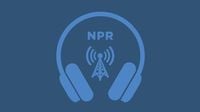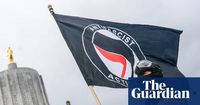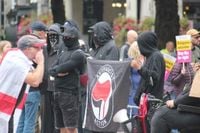On Monday evening, September 22, 2025, President Donald Trump signed a sweeping executive order officially designating Antifa as a domestic terrorist organization—a move that instantly ignited fierce debate across the nation and raised thorny questions about the limits of executive power, free speech, and the definition of terrorism itself. The order, announced from the White House and detailed in a series of administration fact sheets and press briefings, marks the first time in U.S. history that a president has attempted to apply the label of "domestic terrorist organization" to an American political movement.
According to the text of the executive order, as reported by multiple outlets including TIME, NPR, and the American Presidency Project, Antifa is described as a "militarist, anarchist enterprise that explicitly calls for the overthrow of the United States Government, law enforcement authorities, and our system of law." The order alleges that Antifa "uses illegal means to organize and execute a campaign of violence and terrorism nationwide to accomplish these goals." Specific actions cited in the order include armed standoffs with law enforcement, organized riots, violent assaults on Immigration and Customs Enforcement (ICE) officers, and the routine doxing and threatening of political figures and activists.
The executive order directs all relevant federal agencies to "investigate, disrupt, and dismantle any and all illegal operations" performed by Antifa or anyone claiming to act on its behalf. It goes further by calling for investigations into the funding sources behind such operations, an effort the administration says is necessary to stem political violence and restore law and order.
President Trump himself took to Truth Social on September 17, just days before signing the order, to reiterate his stance: "I am designating ANTIFA, A SICK, DANGEROUS, RADICAL LEFT DISASTER, AS A MAJOR TERRORIST ORGANIZATION. I will also be strongly recommending that those funding ANTIFA be thoroughly investigated in accordance with the highest legal standards and practices." White House Press Secretary Karoline Leavitt echoed this message at a Monday press briefing, asserting, "This is something the president campaigned on because we have seen a rise in violence perpetrated by Antifa radical people across this country who subscribed to this group. And unfortunately, it's gone widely uncovered by many in the legacy media."
The order arrives in the immediate aftermath of the murder of prominent conservative activist Charlie Kirk. While the motives of the suspect, Tyler Robinson, remain unclear, the administration has pointed to evidence that at least one of the bullets used in the killing was engraved with an anti-fascist message: "Hey fascist! CATCH!" According to Leavitt, this detail underscores the urgency of the administration's crackdown on what it calls "Antifa radical people."
Yet, as NPR and the Congressional Research Service (CRS) have both emphasized, Antifa is not a traditional organization with a clear hierarchy or membership roll. Instead, it is a loosely affiliated movement that rose to national prominence after the violent clashes at the 2017 "Unite the Right" rally in Charlottesville, Virginia. The CRS notes that Antifa is composed of "loosely affiliated individuals" with no central leadership or common enemy list, united primarily by their opposition to fascism and far-right neo-Nazi ideologies. Some adherents identify as anarchists, socialists, or communists, but the movement as a whole lacks a singular ideology beyond anti-fascism.
“That’s something that I think folks were trying to figure out—you know, who their leader is and who do they follow. And so that’s why I used the term decentralized. It’s not like you could, you know, go online and say, oh, that’s their leader, or that’s their national organizational headquarters. I don’t recall any of that being detected,” Billy Williams, former U.S. attorney for the District of Oregon, told NPR in reference to previous attempts to identify a coordinated Antifa network during protests in Portland.
Despite the order’s strong language and sweeping directives, the legal foundation for such a designation is, at best, murky. As Politifact and legal scholars from the Brennan Center for Justice have pointed out, there is currently no federal statute that allows for the designation of domestic groups as terrorist organizations. Faiza Patel of the Brennan Center explained, "The Secretary of State has authority to designate foreign terrorist groups, but there is no parallel authority to designate (a) domestic terrorist group." The Antiterrorism and Effective Death Penalty Act of 1996 governs the designation of "foreign terrorist organizations" under section 219 of the Immigration and Nationality Act, but no such provision exists for domestic entities.
This lack of clear legal authority has become a central point of criticism among civil liberties advocates, legal experts, and lawmakers. Patrick G. Eddington, a senior fellow at the libertarian Cato Institute, called the executive order "idiotic on multiple levels." He elaborated, “The notion that an idea can be designated an organization is one. The fact that there’s no constitutional provision or statute granting any president the power to designate a domestic civil society organization a ‘domestic terrorist organization’ is another.” Democratic Congressman Bennie Thompson, ranking member of the Homeland Security Committee, was even more blunt: the order, he said, "serves to allow for the Trump administration to stifle dissent, investigate anyone—or any group—they don’t like, punish their enemies, and potentially label any American they want as a terrorist."
Concerns about constitutional rights are not limited to legal scholars. NPR's Odette Yousef reported a "real fear that this conflation of anti-fascism and terrorism may stigmatize anyone or any group working on movements for community building and racial or social justice." The risk, she notes, is that the order could be used to investigate or prosecute peaceful protestors, journalists, or activists whose only "crime" is their opposition to far-right extremism or their participation in demonstrations.
Supporters of the order, however, argue that a strong federal response is necessary to combat political violence and protect law enforcement officers. The White House fact sheet claims that ICE officers have faced a "1000% increase in assaults" attributed to Antifa, and cites incidents such as the doxing of ICE agents in Portland and violent attacks on Trump supporters during a Patriot March in Pacific Beach, California. The administration contends that Antifa's efforts "to advance political violence and suppress lawful political speech must be stopped," and that restoring law and order is a top priority.
As the dust settles, the implications of President Trump’s executive order remain deeply uncertain. Will federal agencies use the order to ramp up investigations and prosecutions, as the White House intends? Or will legal challenges and civil liberties concerns ultimately render the order symbolic—a political gesture rather than a practical tool? For now, one thing is clear: the debate over Antifa, the limits of protest, and the boundaries of presidential authority is far from over, and the consequences of this unprecedented move will reverberate through American politics and society for months, if not years, to come.


